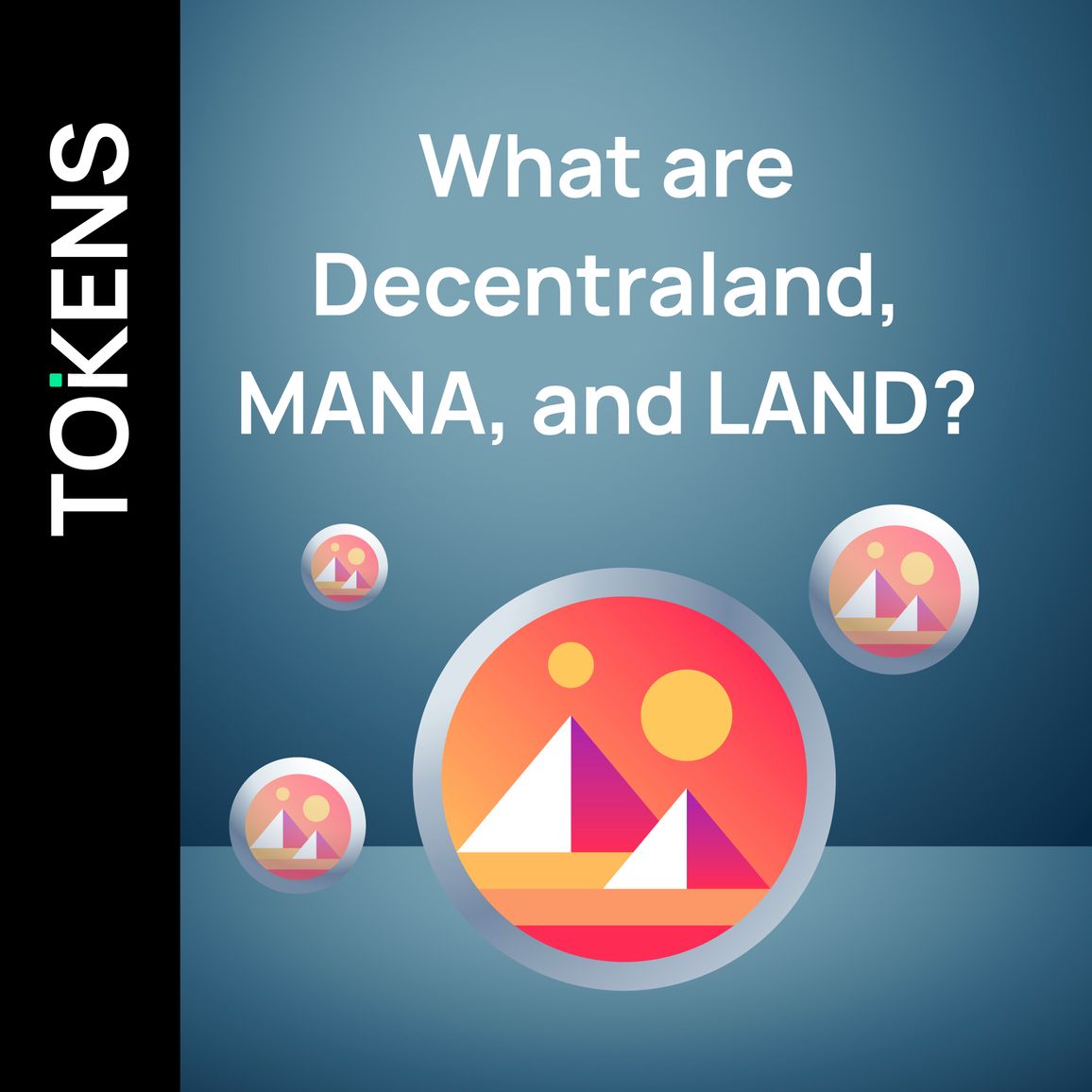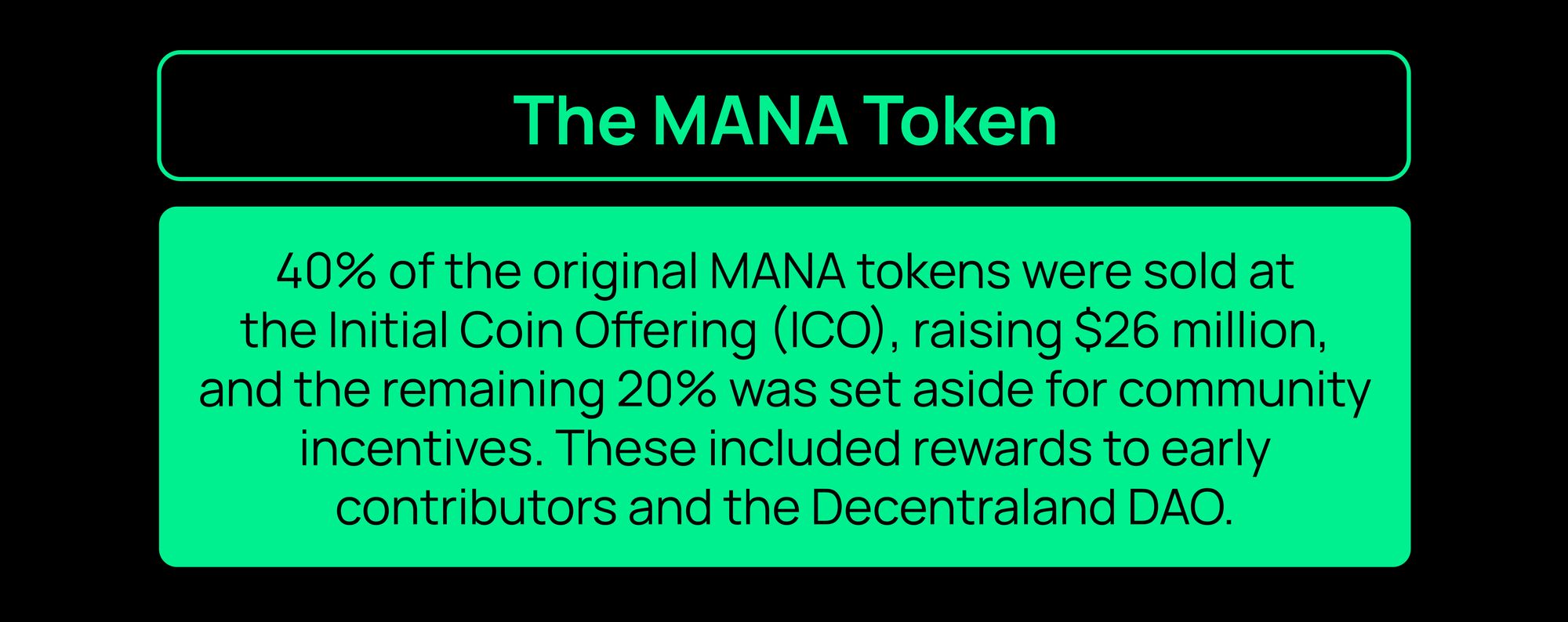What are Decentraland, MANA, and LAND?

A second world, or digital real estate powered by the Ethereum blockchain
Decentraland is a virtual world built on the Ethereum blockchain that allows users to buy and sell digital real estate, while exploring, interacting, and playing games with one another. MANA is the cryptocurrency used in this virtual world to buy LAND or virtual goods and services in Decentraland. Every ‘plot’ of real estate, or LAND, is a non-fungible token (NFT), which users can either buy or sell.
Simple enough? It’s like the game Second Life but powered by blockchain, and MANA can be traded on major crypto exchanges like Bit.com. MANA is unique in that it is fully decentralized and not overseen by a single governing body. The Decentraland DAO also allows MANA holders to vote on decisions that change the platform’s content and everyday operations.
But to understand if it’s worthwhile to add MANA to your portfolio, it’ll help to dive a little deeper into the story of Decentraland.
What is Decentraland?
Think of it as something like SIMS, where you have your avatar, and you can use MANA to buy special moves like the “Buffalo Cowboy Line Dance” or unique one-of-a-kind accessories such as “Black Swan Wings” for 1,900 MANA. You can also buy LAND, a non-fungible digital piece of land, which lets you create games, applications, gambling services, or even dynamic 3D scenes. There is also potential to expand your service offerings for the LAND into education, professional development, tourism, etc. Basically, whatever you want your virtual real estate to be. Many Decentraland users currently monetize their LAND through leasing, advertising, and paid experiences.
The number of LAND is capped, and each plot of LAND is 33 ft x 33 ft, but there’s no limit to its height, so yes, supertowers! Users having LAND beside one another can also form a district based on common interests, such as a district of crypto enthusiasts or high-end NFT collectors. Decentraland’s voting dApp, Agora, allows you to vote in decisions regarding your district. The more LAND you own, the more votes you get.
Decentraland is divided into 90,601 individual parcels of LAND, each of which is represented by an ERC-721 non-fungible token. Each LAND is exactly 16m x 16m (256 square meters) and can be found at a particular coordinate in the Metaverse.
A quick browse on the Decentraland Events page will open your experience up to Live DJ acts, health lectures, crypto discussion panels, film festivals, poker and pool tournaments, and branded activities by big brands such as Jägermeister.
In short, it’s crypto real estate with the potential of giving you great returns on investment if enough people get on the Decentraland platform.

The MANA token
The MANA ERC20 token is limited to a total of 2.8 billion MANA, but close to 1 billion have already been burned in marketplace transaction fees and auctions. Once tokens are burned, they are removed from the total circulation forever. This was intentionally created to limit and reduce the supply of MANA, so as to create scarcity and drive up the price of the coin. So as time goes on, there will be less and less MANA in the market, and that’s an important plus point to consider if you’re thinking about investing in MANA.
40% of the original MANA tokens were sold at the Initial Coin Offering (ICO), raising $26 million, and the remaining 20% was set aside for community incentives. These included rewards to early contributors and the Decentraland DAO.
Is MANA a good investment?
There is definitely a lot of excitement surrounding the Metaverse and decentralized initiatives such as Decentraland. Currently, there are over 200,000 users on the platform. It is, however, important to note that MANA hasn’t been spared from the bearish 2022 global crypto trend. Since MANA saw its peak of $5.16 in November 2021, its value has been on a steady decline to just under $0.70 at the time of writing.
Of course, the adoption of the Metaverse is still in its infancy, and mainstream users of social media platforms have yet to make the switch. Some would argue that it’s only a matter of time before everyday users immerse themselves in 3D virtual worlds and start owning 3D real estate. Others would be a little more pessimistic about the move as they feel that most users would still prefer to keep their current social media platforms as a way to share their real-life experiences.
Given the potential of Decentraland, we’d like to stay on the side of optimism and keep a close watch on their latest developments, signup rates, and of course, MANA’s demand on the market.
Give it a go and add MANA to your portfolio! Start trading on Bit.com and Switch On Your Future.

